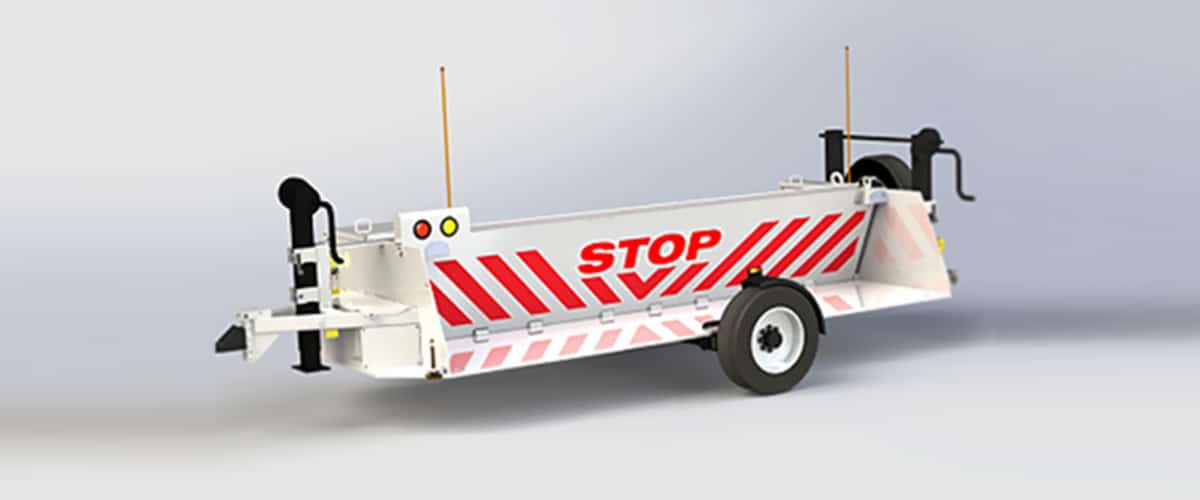Excitement About Wedge Barriers
Wiki Article
The Single Strategy To Use For Wedge Barriers

14 and the surface 12 to which the barrier 10 is safeguarded might be made from concrete - Wedge Barriers. 2, the barrier 10 is placed to or includes an anchor or subframe (e. g., anchor 30 displayed in FIG. 2 )secured under the surface area 12. As an example, the bather 10 might be bolted to the support or safeguarded to the support by various other mechanical bolts. In the detailed personification, the barrier 10 includes a wedge plate 16, which includes a portion that is substantially identical with the surface area 12 when the obstacle 10 remains in the pulled back setting. Simply put, automobiles or people may pass over the obstacle 10 when the barrier 10 is in the retracted position and experience slight altitude about the surface area 12 while on the barrier 10. As discussed in detail listed below, when the barrier 10 is in the released placement, the wedge plate 16 is held and supported in a raised setting by a lifting mechanism of the obstacle 10. Furthermore, the components 18 might be bolted or otherwise mechanically combined to one an additional. In this way, repair work or substitute of one or even more elements 18 may be streamlined and structured. That is, fixing or replacement of single parts 18 may be done faster, easily, and cost effectively. FIG. In particular embodiments, the anchor 30 may be a steel structure including plates, beam of lights(e. g., I-beams ), and/or other frameworks that are protected within the structure 14, which may be concrete. At the surface area 12, an upper side 28 of the support 30 may go to the very least partially revealed , thus enabling the accessory of the obstacle 10 to the anchor 30. g., threaded openings)in several beam of lights or plates of the support 30 might be exposed to the surface area 12. In this manner, bolts 32 or various other mechanical bolts may be made use of to secure find this the barrier 10 to the support 30. As the obstacle 10 is mounted to the surface 12 of the structure 14, collection of particles and other product underneath the barrier may be lowered, and elements of the bather 10 might not be subjected to below grade atmospheres. As shown by recommendation numeral 52, the training device 50 includes elements got rid of beneath the wedge plate 16. The parts 52 beneath the wedge plate 16 may include an electromechanical actuator, a useful content camera, one or even more cam surfaces, and so forth. Furthermore, the training device 50 consists of a springtime assembly 54
The spring rod 58 is combined to a camera(e. g., camera 80 shown in FIG. 4) of the lifting mechanism 50. The springtimes 60 disposed about the springtime rod 58 are kept in compression by springtime sustains 62, consisting of a dealt with spring support 64. That is, the set springtime support 64 is repaired relative to the structure 14 and the rest of the bather 10.
All about Wedge Barriers
The staying force used to the cam camera deploy release wedge plate 16 may be provided given an electromechanical actuator 84 or other actuator. The springtime assembly 54 and the actuator 84(e. Wedge Barriers. g., electromechanical actuator)may run with each other to convert the web cam and lift the wedge plate 16.
As pointed out over, in the released placement, the wedge plate 16 serves to block access or travel beyond the barrier 10. The obstacle 10(e. g., the wedge plate 16 )may discover here block pedestrians or automobiles from accessing a residential or commercial property or path. If a vehicle is traveling towards the deployed wedge plate 16(e. For instance, in one situation, the safety and security legs 86 may be extended duringmaintenance of the barrier 10.
Report this wiki page